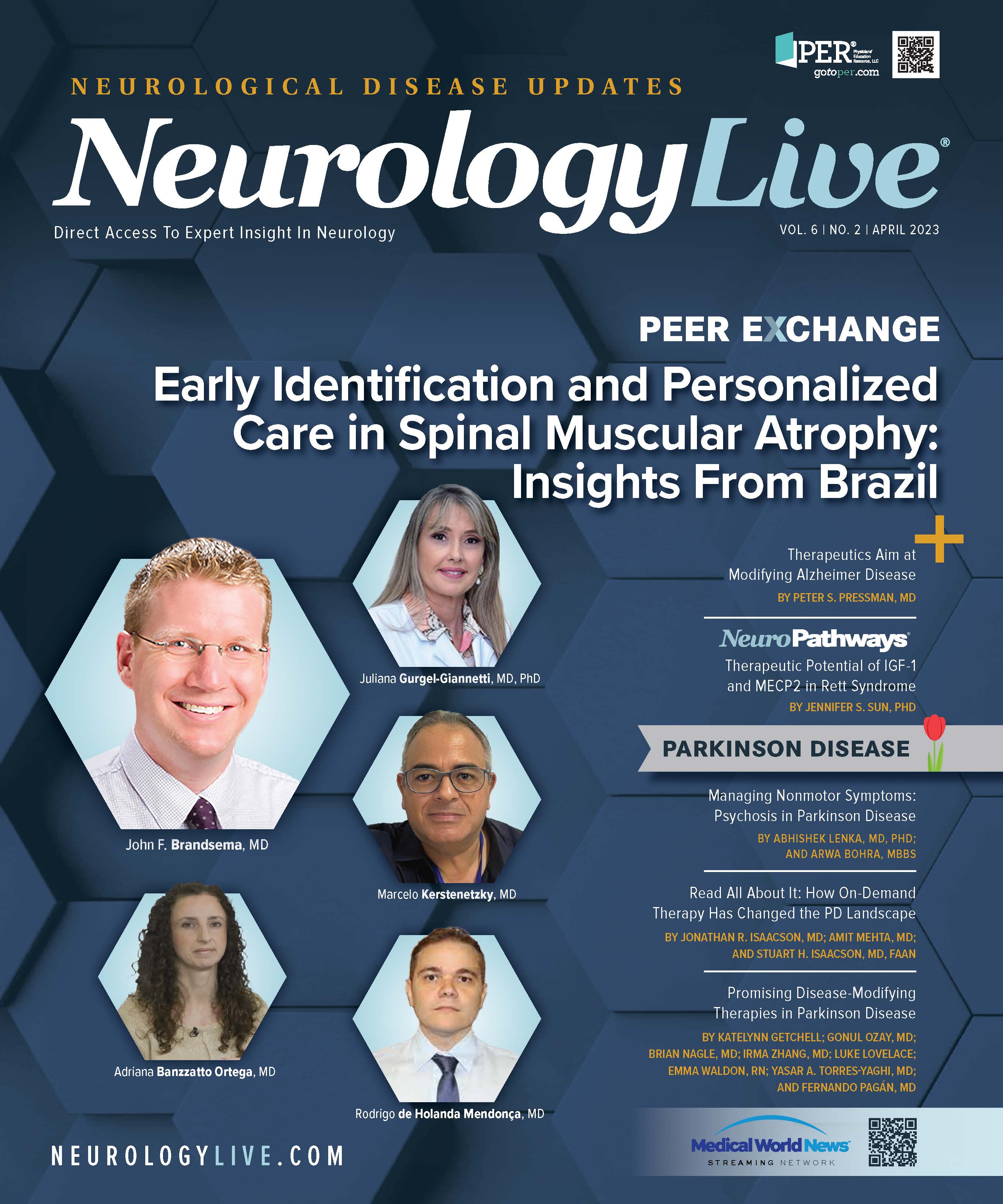Publication
Article
NeurologyLive
Favorable Safety Outcomes Observed in Ozanimod Over Diroximel Fumarate
Author(s):
The ozanimod group demonstrated significantly lower odds of safety outcomes such as nasopharyngitis, diarrhea, and urinary tract infection relative to diroximel fumarate.
Marisa McGinley, DO

Data from a matching-adjusted indirect comparison (MAIC) of ozanimod (Zeposia; Bristol Myers Squibb) and diroximel fumarate (Vumerity) in patients with relapsing-remitting multiple sclerosis (MS) indicated that the 2 disease-modifying therapies (DMTs) have comparable efficacy; however, ozanimod displayed a superior safety profile, with significantly lower risks of key safety outcomes.
Led by Marisa McGinley, DO, staff neurologist, Mellen Center for Multiple Sclerosis Treatment and Research, Cleveland Clinic, the MAIC was informed by a targeted literature review (TLR) that comprised of the phase 3 EVOLVE-MS-1 trial (NCT02634307) of diroximel fumarate and the phase 3 SUNBEAM (NCT0229408) and RADIANCE (NCT02047734) trials of ozanimod. Individual patient data from SUNBEAM and RADIANCE were weighted to match baseline patient characteristics of EVOLVE-MS-1, including Expanded Disability Status Scale (EDSS) score, prior relapse, gadolinium-enhancing lesions, prior DMT use, age, sex, and weight.
Presented at the 2023 Americas Committee for Treatment and Research in Multiple Sclerosis (ACTRIMS) Forum, held February 23-25, in San Diego, California, this was the first comparison analysis between the 2 therapies. There were significant baseline differences between the studies, as EVOLVE-MS-1 trial patients (n = 696) had a mean age of 41.9 years. Patients in that study had mean weight of 74.9 kg, 72.6% were female, and 65% had prior DMT use. In comparison, the pooled ozanimod trials (n = 880) had mean age of 35.4 years, mean weight of 70.3 kg, with 65.5% of patients female, and 28.5% with prior DMT use.
Following matching, the risk ratio for annualized relapse rate (0.924; 95% CI, 0.646-1.324) and odds ratio for proportion of patients relapsed (0.997; 95% CI, 0.671-1.483) were similar between the treatment arms. In terms of safety, there were reduced odds of adverse events with ozanimod (OR, 0.877; 95% CI, 0.583-1.320); however, these were not statistically significant.
There were several differences in safety outcomes, including a significantly lower odds of discontinuation (OR, 0.089; 95% CI, 0.030-0.268) and serious AEs (OR, 0.290; 95% CI, 0.114-0.737) with ozanimod. Additionally, the therapy continued to outperform diroximel fumarate in other treatment-emergent AEs such as nasopharyngitis (OR, 0.466; 95% CI, 0.255-0.849) diarrhea (OR, 0.184; 95% CI, 0.072-0.473) and urinary tract infection (OR, 0.545; 95% CI, 0.297-0.999).
At the conclusion of the analysis, McGinley et al noted that "several limitations exist when performing an unanchored MAIC including unobserved confounding, the need for strong assumptions in the analysis, and potentially reduced sample size due to weighting of the treatment effect modifiers."
Ozanimod, an oral shingosine-1-phosphate receptor modulator, received FDA approval in May 2020, with findings from SUNBEAM and part B of the phase 3 RADIANCE study (NCT01628393) trials supporting the decision. These studies, which included more than 2600 adults, compared ozanimod to interferon beta-1a on the primary end point of ARR. In SUNBEAM, over a 12-month treatment period, the adjusted ARR were 0.35 (95% CI, 0.28-0.44) for interferon beta-1a compared with 0.18 (95% CI, 0.14-0.24) for the ozanimod 1.0-mg group and 0.24 (95% CI, 0.19-0.31) for the 0.5-mg group, for respective rate ratios of 0.52 (95% CI, 0.41-0.66; P <.0001) and 0.69 (95% CI, 0.55-0.86; P = .0013).
Click here for more coverage of 2023 ACTRIMS Forum.
REFERENCES
1. McGinley M, Paul D, Branchcomb T, et al. A matching-adjusted indirect comparison of ozanimod to diroximel fumarate in patients with relapsing-remitting multiple sclerosis. Presented at: 2023 ACTRIMS Forum; February 23-25; San Diego, CA. Abstract P046
2. Comi G, Kappos L, Selmaj KW, et al. Safety and efficacy of ozanimod versus interferon beta-1a in relapsing multiple sclerosis (SUNBEAM): a multicentre, randomized, minimum 12-month, phase 3 trial. Lancet Neurol. Published online September 3, 2019. doi: 10.1016/S1474-4422(19)30239-X.





